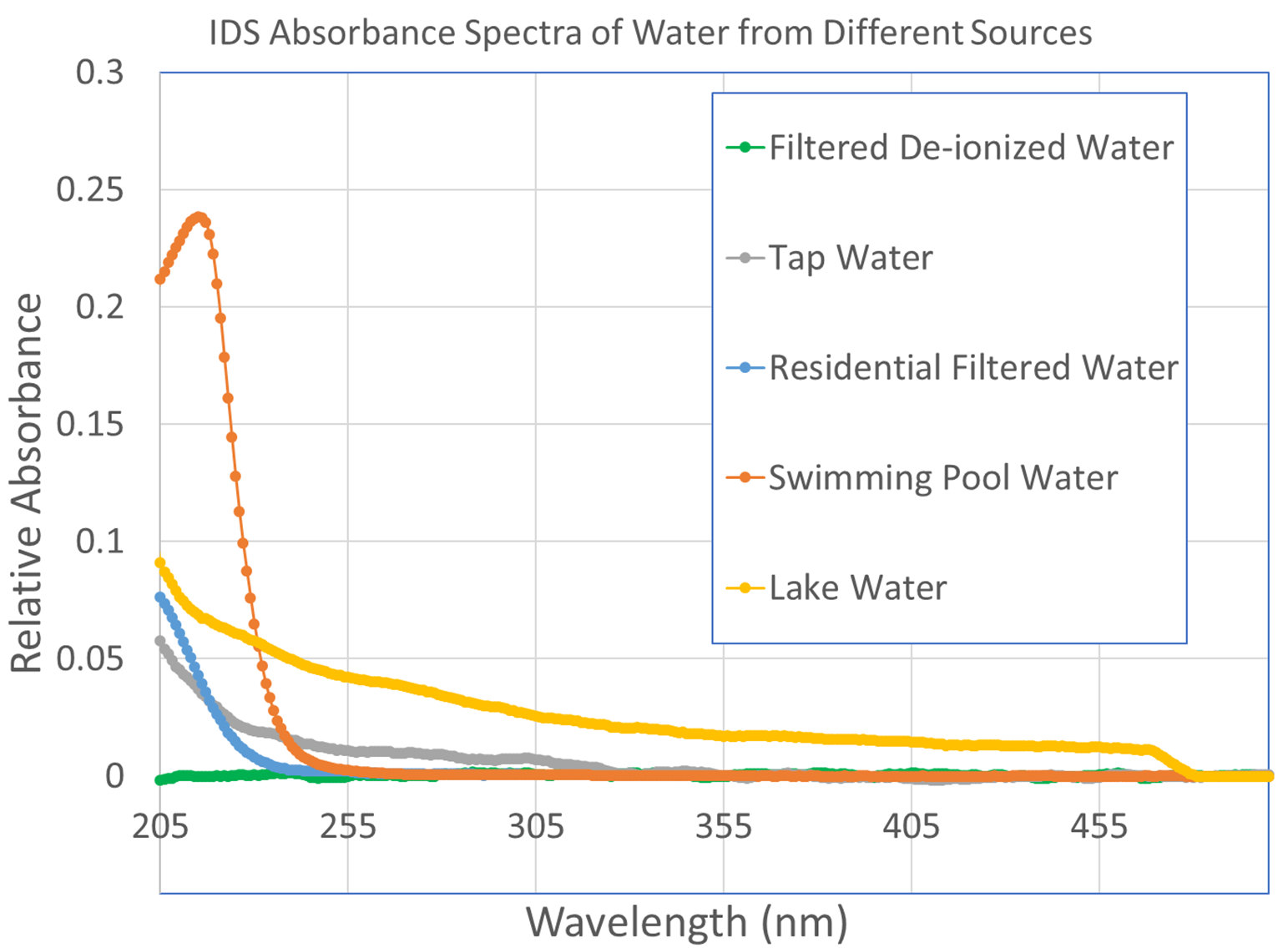Measurement and quantification of water quality is not only critical for health and safety but also important for environmental protection measures. UV/Vis spectroscopy using IDS is an effective modern analytical tool for water analysis where most cations/anions can be determined with high sensitivity. The common procedure used for analysis involves mixing a water sample with reagents that specifically react with the constituent being analyzed causing a colored compound to form. The concentration of the colored compound can then be measured and quantified using UV/Vis absorbance where the absorbance at a specific wavelength or spectral range is proportional to the concentration of the analyte in the water.
The IDS absorbance spectra below illustrate how the system can be used to analyze and compare water from different sources. Each source has a unique spectrum that helps identify it and provides details about the analytes and concentrations present. Pool water exhibits a strong UV peak characteristic of the presence of bromine/chlorine while lake water shows absorbance extending into the visible (>400nm), which is an indication of the presence of algae, phytoplankton and chlorophyll-based organisms.

Analysis of UV/Vis water absorbance spectra from different sources using the IDSpectra instrument